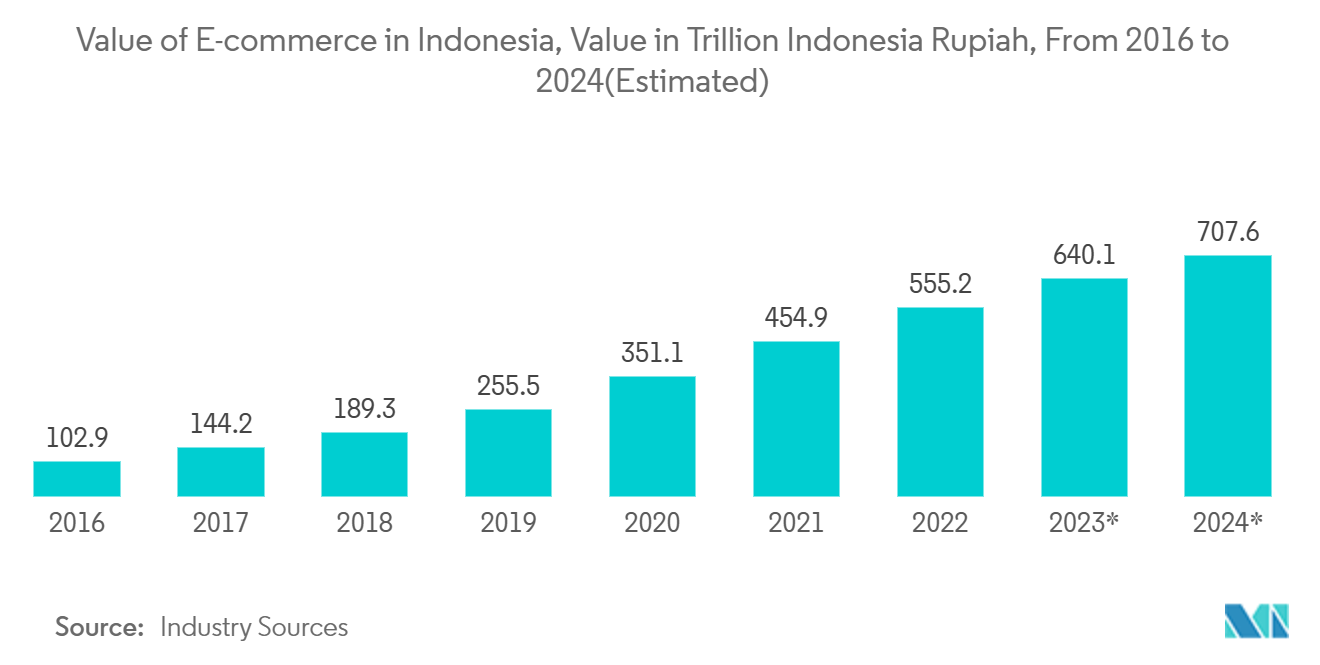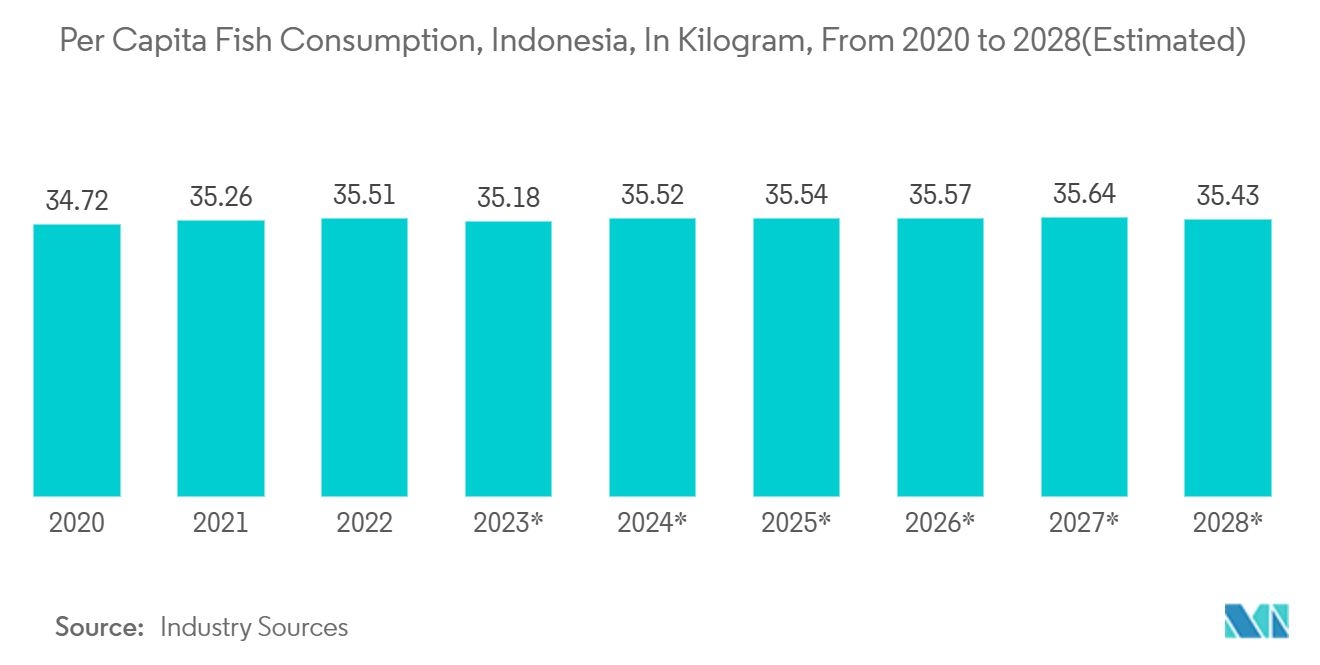Market Trends of Indonesia Cold Chain Logistics Industry
Growing Demand from E-Commerce Sector
The total internet user penetration rate in Indonesia in January 2023 was 77%, showing the gradually increasing internet penetration in the country. This value is estimated to increase in the following years to reach 89.3% by 2025, leading to growth in the e-commerce market. As the biggest archipelago in the world, Indonesia is also one of the world's largest producers and suppliers of fisheries products. Indonesians consume more than 40 kilograms of fish per capita per year, making it one of the most fish-dependent nations in the world. In the e-commerce segment, essential items like groceries and frozen seafood dominate, indicating that these are the main growth drivers for the cold chain industry in the country. Because of the COVID-19 impact, the e-commerce market in the frozen food segment grew with an increase in home cooking.
Automation is a new technical development revolutionizing the Indonesian cold storage industry by improving efficiency and lowering waste. Automation improves accuracy and speeds up services by streamlining the staging and picking procedures. Real-time temperature monitoring makes it possible to lessen waste brought on by contamination and spoilage. Since robotic stacker cranes can access far higher shelves than forklift operators, automation results in lower building footprints, lowering the cost of land and rentals and reducing theft and tampering. It improves worker ergonomics, increasing safety and productivity.
Indonesia has a rising demand for meat, prepared meals, and seafood and fish. The greatest market is frozen meat, favored due to its superior nutritional value. Despite significant fish imports from nearby nations, the frozen fish and seafood market is predicted to develop slowly throughout the projection period. However, it is anticipated that the preference of local Indonesians for high-quality, nutrient-dense processed food would fuel demand for frozen processed food, which retains nutritional content even after being frozen.

Frozen Food and Shrimp Industry Driving the Growth in Market
Indonesia frozen food market is expected to be valued at USD 579.7 million by 2024 driven primarily by increased working hours of Indonesian people that has driven the demand for easy convenience processed food. Local Indonesians' increased purchasing power is anticipated to be primarily driven by growing urbanisation and rising disposable income. In the processed food category, frozen food is anticipated to satisfy Indonesian consumers' desire for fast, easy food without sacrificing health advantages. While frozen food products shorten the cooking process, they nevertheless retain the majority of the nutrients found in fresh veggies or non-vegetable goods. The demand in the local Indonesian market is anticipated to be driven by hypermarkets and supermarkets with well-equipped storage and freezing facilities. In Indonesia, there is a rising demand for meat, prepared meals, and seafood and fish. The greatest market is for frozen meat, which is favoured due to its superior nutritional value. Despite significant fish imports from nearby nations, the frozen fish and seafood market is predicted to develop slowly throughout the projection period. However, it is anticipated that the preference of local Indonesians for high-quality, nutrient-dense processed food would fuel demand for frozen processed food, which retains nutritional content even after being frozen.
Cold chain industries that depend on cattle, fisheries, and processed foods have a sizable potential market in Indonesia. The cold chain industry supports not only the fishing and food processing sectors, but also the pharmaceutical and retail networks. In the past several years, the fishery industry began to grow in Jakarta especially for the shrimp market. A number of cold storage facilities such as that of PT. AGB Tuna located at Muara Angke, have been busy handling the storage of fish/shrimps for exports and the local market. Seafood contributed 45% to frozen food consumption, followed by chicken with a share of 22% and meat with a share of 8%. The government set an ambitious goal of being the world's largest shrimp producer and raising the nation's shrimp export earnings by 250% by 2024.


